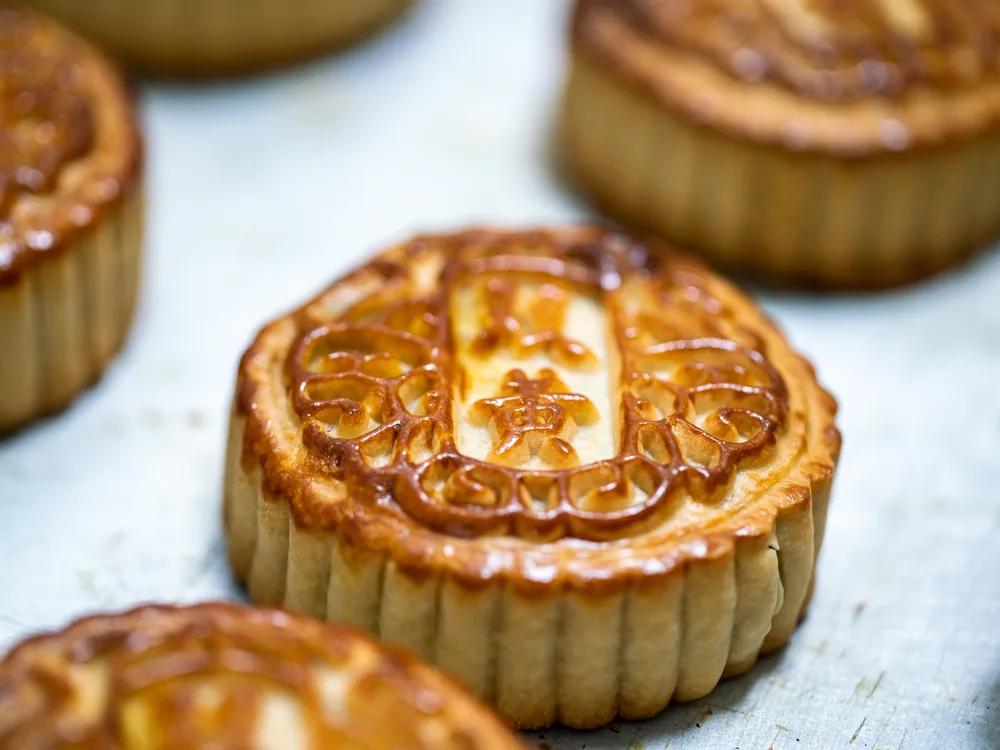The miniature cakes, which fit in the palm of a hand, are most commonly made with a thin pastry layer encasing a dense filling of sweetened red beans, melon purée or mixed nuts.
Xvision/Getty Images
Some may argue that Chinese desserts are not the most delicious out there. It could be hard to convince the non-adventurous eater to choose a chewy sesame ball of dough floating in water over an ice cream sundae, or a red-bean dumpling over a decadent chocolate cake. However, as someone with Taiwanese roots who grew up in Australia eating these Asian desserts, I personally would fight for the last bite of tang yuan, zongzi or a mooncake if given a chance.
During the Mid-Autumn Festival, or Moon Festival, celebrated by Chinese around the world on the 15th day of the eighth lunar month each year (September 17 this year), mooncakes are eaten in gluttonous quantities. By mid-August, supermarkets, grocery stores, bakeries and even luxury hotels stockpile the desserts to cater to mooncake madness—an industry valued at more than $2.3 billion in recent years. Families gather together over a meal and light lanterns, look at the moon and eat yue bing, otherwise known as mooncakes, wishing each other wealth and happiness. The miniature cakes, which fit in the palm of a hand, are most commonly made with a thin pastry layer encasing a dense filling of sweetened red beans, melon purée or mixed nuts, depending on where in Asia you purchase them.
With roots in China, mooncakes are not just confined to the mainland. In South Korea, mooncakes are called songpyeon, and they are eaten in celebration of Chuseok, a mid-autumn festival. Similarly, in Vietnam, banh trung thu are enjoyed at Tet Trung Thu, and in Japan, sticky, chewy dango are consumed at Tsukimi, a fall festival which loosely translates to “looking at the moon.”
While the name of the mooncake varies across Asia, the importance of eating them is universal, says Yuki Kugota, a Japan native and chef at Megu restaurant in Gstaad, Switzerland. “It is a chance for families to gather together, admire the moon and enjoy mooncakes,” she says. “The moon is at its fullest, and people can pray to the moon gods for a good autumn harvest.”
According to Xiaohuan Zhao, a scholar of Chinese literature and theater at the University of Sydney in Australia, the mooncake is…
Click Here to Read the Full Original Article at Travel | smithsonianmag.com…
